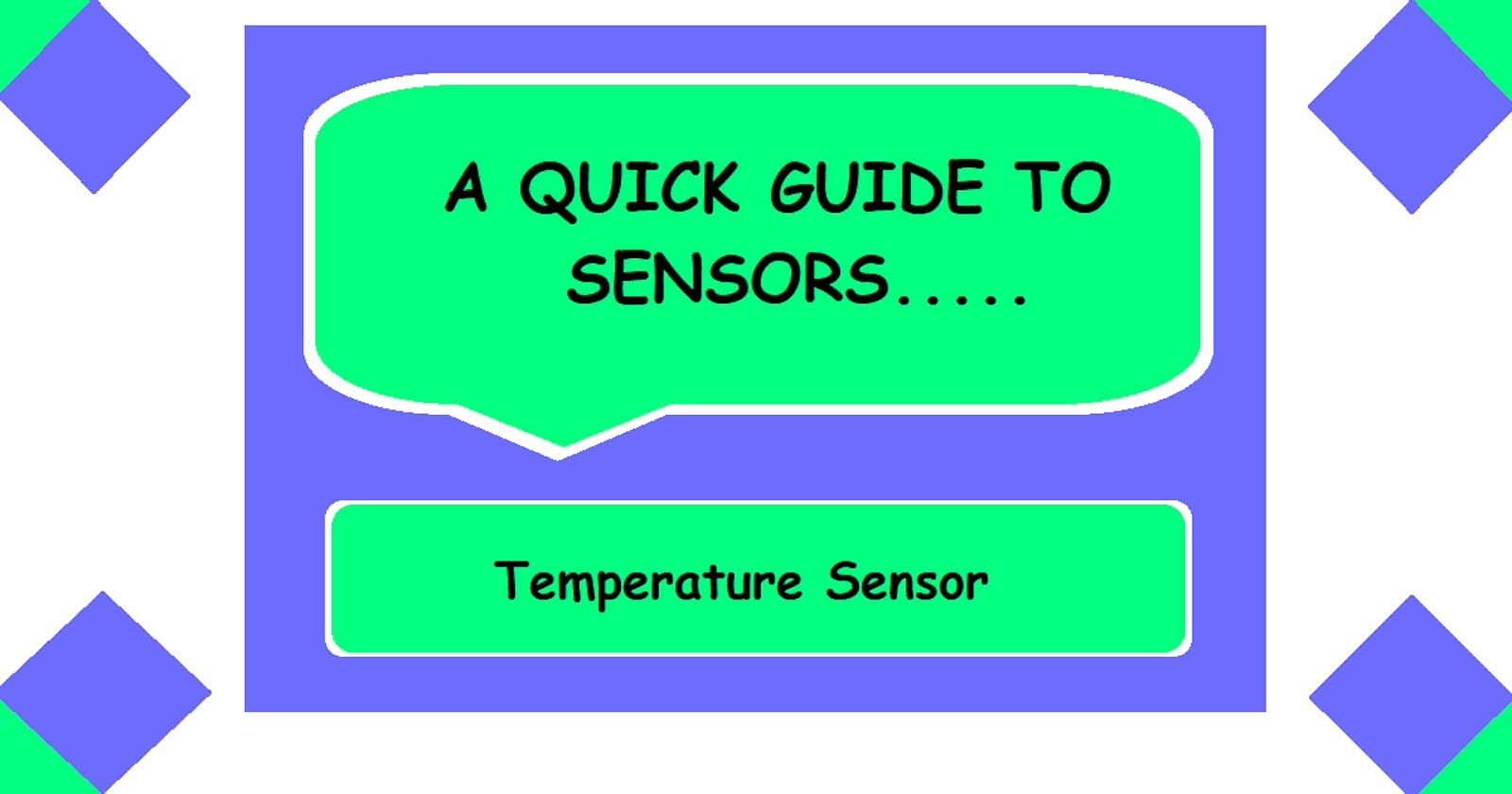Welcome to this interesting series of sensors. Today, I will explain Temperature sensor.
🍁What is a Temperature sensor?
A temperature sensor is a type of electronic device that detects the temperature of its surroundings and transforms the measured data into electronic data in order to record, monitor, or indicate temperature changes.
🍁What's the working funda of Temperature Sensor?
Temperature sensors use electrical impulses to calculate temperature values. The sensor is comprised of two metals that create electrical voltage or resistance when it detects a temperature change. The temperature change is directly proportional to the diode’s resistance. The cooler the temperature, lesser will be the resistance, and vice-versa.
🍁Types of Temperature Sensor

- 🔗The Resistance Temperature Detector
(RTD) is a type of thermometer that compares the resistance of the RTD element to the temperature to detect temperature. Many materials, such as platinum, nickel, or copper, can be used to make the metal. Platinum, on the other hand, is the most precise and, as a result, the most costly.
- 🔗Thermocouple
A thermocouple is a sensor made consisting of two wires made of two distinct metals connected at two points. The temperature change is represented by the voltage between the two wires. Although their accuracy is slightly lower than an RTD, they have the largest temperature range (-200 °C to 1750 °C) and are generally less costly.
- 🔗Thermistor
The thermistor changes temperature in a precise, predictable, and meaningful way. Temperatures are reflected incredibly rapidly but also very precisely with such a large change. The NTC thermistor requires linearization due to its size and speed, which demands fundamental mathematics.
- 🔗Thermometer
We generally think of a thermometer when we think of temperature, particularly the mercury-filled glass tube. Glass thermometers, bimetal thermometers, gas-filled thermometers, and liquid thermometers are among the many types of thermometers available.
- 🔗Thermal imaging
Thermal imaging is a method of remotely sensing temperature in relation to its surroundings. Infrared radiation is detected by thermal imaging cameras. This data is generally presented on an LCD panel, with distinct colour ranges identifying temperature variations.
- 🔗Infrared
IR thermometers (infrared radiation thermometers) measure temperature without touching it. The temperature of the thing being measured is constantly sent. The physics of broadcasting is governed by Planck's Law of Thermal Radiation. The infrared spectrum is between visible light and radio frequencies. Microns are a typical unit of measurement for infrared wavelengths.
🍁How a Temperature sensor looks like?

🍁Interfacing of temperature sensor with Arduino

🍁Source Code
#include <Wire.h>
const int analogInPin = A5; //sensor connected to A5 pin
const int SensorValueLow = 463;
const int SensorValueDiff = 36; // differance between high and low sensor value
const int TempValueDiff = 42; // differance between high and low Temp value
const int TempValueLow = 9;
int sensorValue = 0;
double Temp = 0;
void setup()
{
}
void loop()
{
sensorValue = analogRead(analogInPin);
Temp = sensorValue-SensorValueLow;
Temp = Temp/SensorValueDiff;
Temp = Temp*TempValueDiff;
Temp = Temp+TempValueLow;
Serial.print(sensorValue); //printing value of sensor on the serial monitor
Serial.print(Temp); // printing temperature on the serial monitor
delay(200); // interval of fetching data from sensor
}
🍁Applications of Temperature Sensor
- Temperature sensors are installed in household appliances such as kettles, toasters, washing machines, dishwashers, and coffee makers.
- Temperature sensors are built inside computers to guarantee that the system does not overheat.
- NTC thermistors are used to control the heat on electric radiators.
- It can be used to interpret temperature related stress and volume changes in dams.
- Temperature sensors can also measure water temperatures in reservoirs and boreholes.
Stay tuned to this series to gain knowledge of next sensor... [PIR sensor]
